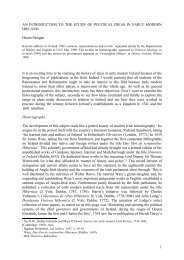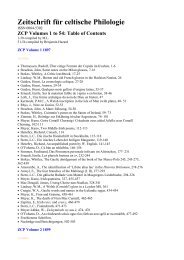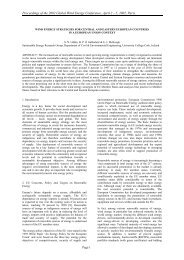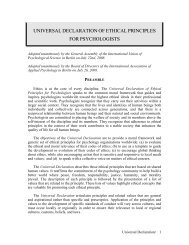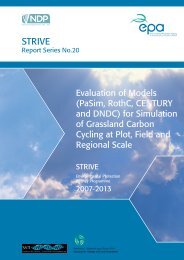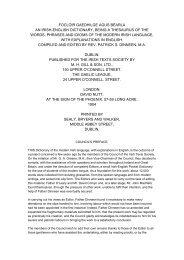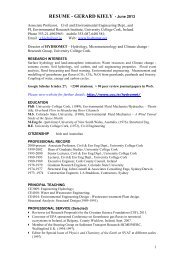Understanding Criminal Behaviour: Beyond Red Dragon - University ...
Understanding Criminal Behaviour: Beyond Red Dragon - University ...
Understanding Criminal Behaviour: Beyond Red Dragon - University ...
Create successful ePaper yourself
Turn your PDF publications into a flip-book with our unique Google optimized e-Paper software.
ooted in personal judgements, a degree of educated guesswork, common sense and logic,<br />
and statistical and clinical probabilities. The profile is certainly not predicated on any<br />
specific ‘absolutes’ (Ainsworth, 2000).<br />
Profiles typically contain predictions of such information such as the offender’s sex,<br />
approximate age, race and other general characteristics (Ault & Reese, 1980). Usually,<br />
profiles contain suggestions related to whether or not the offender is likely to offend<br />
again, whether or not the offender may be forensically aware (i.e. perhaps through prior<br />
experience of the criminal justice system – e.g. via prior arrest - or through knowledge<br />
gained perhaps through textbooks on criminal investigations or forensic analyses, or in<br />
fact through previously undetected offences). In cases involving a sexual offence the<br />
profile might suggest details of the degree of sexual maturity of the offender or the role of<br />
specific fantasy themes in the offending behaviour (Turvey, 1999). Profiles may often<br />
also contain information related to the offender’s likely responses to police questioning<br />
and can result in the profile providing suggestions about the interrogative strategy to the<br />
police (often of particular use in rape cases (Keppel & Walter, 1999)).<br />
An important step in the production of a profile entails a reconstruction of the<br />
offence. The focus here is on the interaction between the offender and victim. Victim<br />
statements can thus be critical in order to ascertain the nature of verbal and physical<br />
behaviour displayed by the offender. The profile may then convey some form of<br />
classification of the offence. This can be important in indicating the likelihood of a reoffence<br />
in the future, so that the police and other agencies involved in the investigation<br />
may develop an intervention strategy aimed at warning a potential victim or group of<br />
victims (which may be symbolic or otherwise representative of the first known victim of<br />
a possible series).<br />
The above description of what profiling involves and the kinds of information provided<br />
probably represent a non-controversial view of profiling. Whatever the differences that<br />
might exist among the offender profiling community about some specific features of<br />
profiling, there are some fundamentally critical points we need to bear in mind. Given the<br />
multivariate nature of approaches to profiling, it is worth briefly describing the principal<br />
approaches currently dominating the practice. These are, in order of their systematic<br />
development: the FBI approach, the clinical psychological approach, the empirical datadriven<br />
approach (often encompassed under ‘investigative psychology’ or sometimes even<br />
‘statistical profiling’ in the UK), and more recently, the geographical approach.<br />
1. The FBI approach<br />
The FBI’s <strong>Behaviour</strong>al Science Unit, now its <strong>Behaviour</strong>al Sciences Investigative Support<br />
Services Unit (BSISSU), is the United States’ best-known clearinghouse for investigative<br />
queries that merit the production of an offender profile (Davis, 1999; Michaud, 1986;<br />
Porter, 1983). Typically, such requests derive from exhausted investigations at local<br />
levels, or involve the flagging of a series of unsolved crimes, typically murder, spanning<br />
two or more federal jurisdictions.<br />
5



